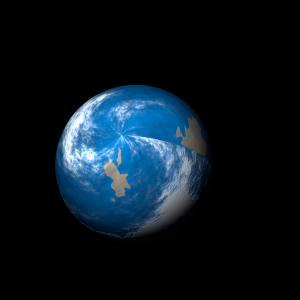|
|
Space Astro
|
Info for exoplanet "Byogya"
| Scientific (actual) data |
|---|
| Name | SOI-8 b |
| Planet status | Confirmed |
| Orbital period | 0.78 |
| Orbit eccentricity | 0.05 |
| Inclination | 82.8 |
| Discovered | 2023 |
| Updated | 2023-04-05 |
| Omega | 273 |
| Impact parameter | 0.25 |
| Publication | Published in a refereed paper |
| Detection type | Primary Transit |
| Radius measurement type | Primary Transit |
| Star name | SOI-8 |
| Right ascension | 4° |
| Declination | 50.54° |
| Star radius | 0.57 |
| Wikipedia article | SOI-8 b |
Back
| |
| Fictional info (?) |
|---|
| Suggested name | Byogya |
| Planet type | Cold planet |
| . |
| Estimated population | 9000000 |
| Atmosphere | Methane | 75% |
| Water | 21% |
| Oxygen | 3% |
| Carbon dioxide | 0.3% |
| Atmospheric pressure | 5 bar |
 |
| No known satellites |
| Google search for Byogya |
|
Website by Joachim Michaelis
|
|
|
|